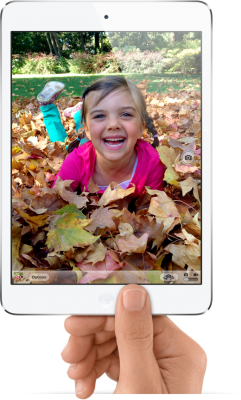With new iPads, Apple targets education opportunity


For Apple's iPad and its tablet rivals, there are three major markets:
- Education
- Enterprise
- Consumers on the couch (or in the plane, or on a train, et cetera)
It's easy to forget those first two, but they undoubtedly are the largest market opportunities for the tech company. I'll save the enterprise for another post, but let's talk about the education market for a moment.
First, the news: Apple announced this afternoon its fourth-generation iPad, touting improved graphics and computing performance, a high-definition front camera and the same 10-hour battery life and price ($499). It also announced the iPad mini, a smaller and cheaper ($329) version that can be held with one hand.
The tech press, including my own colleagues, were stunned at the announcement. The third-generation iPad was only announced in March. Could Apple really release a new device this quickly?
Yes. And together with the mini, they are a formidable tool for claiming even more of the education market.
During Apple's third quarter conference call, CFO Peter Oppenheimer said the iPad was seeing "tremendous momentum" in the education market.
He said, courtesy eWeek:
While interest in the new iPad was high, sales of the reduced price iPad 2 in the K-12 markets were particularly strong, and even though €we achieved all-time record Mac sales to U.S. education institutions during the quarter, we sold more than twice as many iPads as Macs to U.S. education institutions.
CEO Tim Cook added:
We have been very aggressive in the [K-12] space, and I don€™t see that changing in terms of competition. €œWe'€™ve all seen hundreds of tablets come to market over the last few years, and I have yet to see any of them really gain what I would call any level of traction at all.€
Last month, analyst Charlie Wolf called the education market a "canary in the coal mine," courtesy my CNET colleague Dara Kerr:
Clearly, a significant portion of iPad sales represented an expansion of the market. But in view of the fact that Mac sales held steady at around 520,000 units but overall PC sales declined by 265,000 units from 1.90 million to 1.64 million units, we believe the inescapable conclusion is that the iPad is beginning to cannibalize a material portion of PC sales in this market.
There are three points to gather from the above:
- Educators prefer tablets to PCs in many situations.
- Apple has an enormous lead over any rival.
- Apple is preserving that lead at the top (with new technology) and at the bottom (with lower-priced older and/or smaller models) -- and education is particularly sensitive to the price at the bottom.
The new devices announced today are all about keeping that momentum. Apple's third quarter was its second consecutive in which the education market purchased twice as many iPads as Macs, despite record sales for the latter. That spells opportunity: it's not a zero-sum game in terms of use cases, and there are parts of the market that have yet to be addressed by Apple's product.
"The adoption rate of iPad in education is something I’d never seen from any technology product in history," Cook said during that Q3 earnings call. "Usually, education tends to be fairly conservative in terms of buying, or K-12 does, and we're not seeing that at all on the iPad."
With a lower entry-level price point, school districts may be able to wring more from their technology budgets than expected. And Apple will have kicked the proverbial ball further downfield.